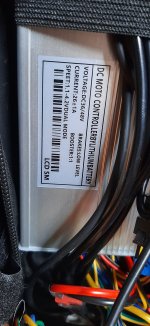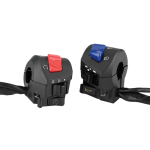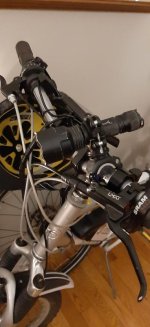Scooter McGavin
100 µW
New (and first) build - using a CSC kit. Everything went together *really* well on a Giant Sedona DX frame.
I have the generic DC Moto controller and a SC-900 display. I'd like to add some lights and have them switchable from the existing function on the SW-900.
I don't have a switched wire at the controller controlled by the light function. There is an unused red/black wire feed that shows main battery voltage when the SW-900 is turned on. I believe I read that there are potentially solder pads inside the controller for a switched light signal. Can anyone confirm this. I'm quite competent at soldering and if I can add a switched feed to drive a relay I'm off to the races.
Thanks people! First post. Managed to get 120km on the bike a few weeks ago before we plummeted back into winter in Canada.
I have the generic DC Moto controller and a SC-900 display. I'd like to add some lights and have them switchable from the existing function on the SW-900.
I don't have a switched wire at the controller controlled by the light function. There is an unused red/black wire feed that shows main battery voltage when the SW-900 is turned on. I believe I read that there are potentially solder pads inside the controller for a switched light signal. Can anyone confirm this. I'm quite competent at soldering and if I can add a switched feed to drive a relay I'm off to the races.
Thanks people! First post. Managed to get 120km on the bike a few weeks ago before we plummeted back into winter in Canada.






